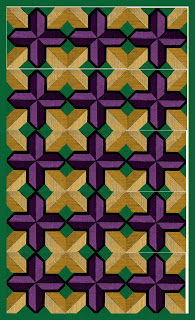To stop working on that project.
I constantly work on more projects than anyone could finish in a lifetime. Frequently, I have so many that I half finish them and forget about them until I am rummaging through my stuff looking for some material for yet another project. I used to think I had to finish every project I started, just as I used to think that I had to finish every book I started reading.
As I have gotten older, I realize that I don't have time to read books that aren't good and I don't have to finish every project I start. I frequently find that I will discover an abandoned project months later and no longer have a need for it anyway which makes it useless to finish.
So for everyone who was sitting around like me, waiting for someone's permission to stop reading a bad book, or to stop sewing a garment that wouldn't fit you anyway, I give you my permission to stop and you don't have to feel the least bit bad about doing so. We are all very busy and all more productive than we think. Less projects and less guilt equal less clutter and more time to focus on what is important.
What to do with those abandoned projects?
Recycle the Materials. You can always recycle the materials into something more useful to yourself at this point in time. Half done sewing projects can become raw materials for new ones. (Imagine my surprise when my boyfriend told me that he could use a bit of a half-done leather project for his uilleann pipes.)
Find someone willing to finish them for you. Sometimes my sister just wants to sew something and she doesn't have a project in the works or doesn't have money to finish the project she is working on and she'll help me sew.
Put them on hold. Put the project on hold for a period of time until you might need it again. Working on knitting mittens in the summer might be less important at the time than sewing summer clothes. Just remember to give yourself time to finish the project before you need it.
I know I have a lot of really creative people who read my blog, is there any project you just want to scrap but feel guilty doing so?













